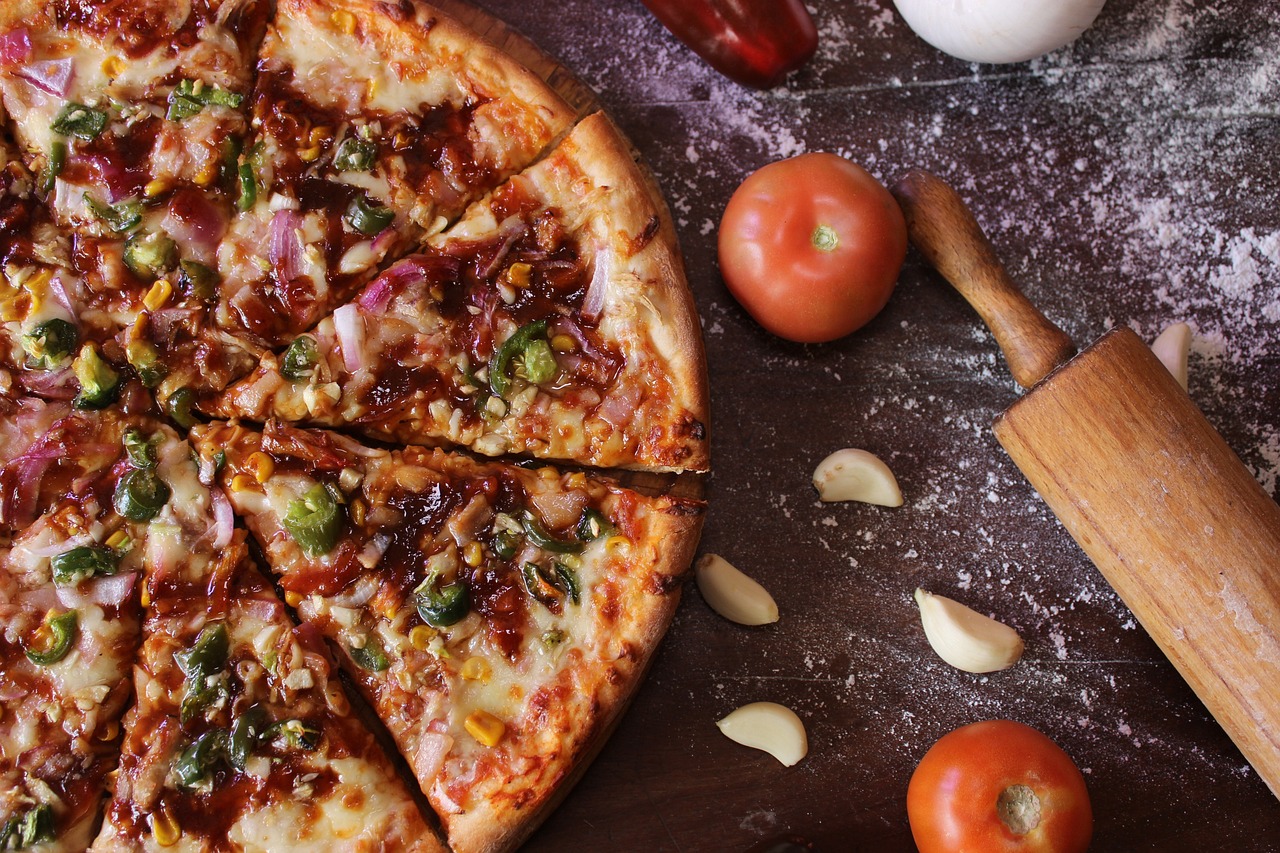Pizza is one of America’s favorite foods. The tasty combination of dough, sauce, cheese and toppings makes it a go-to comfort food for many. However, with its high calories and fat content, pizza has also earned a reputation as an indulgence that should only be enjoyed occasionally.
For health-conscious eaters who want to keep their pizza nights while still maintaining a balanced diet, it’s important to understand exactly what you’re consuming. Let’s break down the calorie content of different types of pizzas to make better choices.
A Quick Overview of Pizza’s Popularity
There’s no denying that pizza holds a special place in Americans’ hearts and stomachs. Surveys show it’s the food adults would choose for their last meal. Pizza accounts for about $45 billion in annual US sales. The average American eats 23 pounds of pizza per year.
With stats like these, it’s clear that pizza isn’t going anywhere. While moderation is key, there’s no need to blacklist this cheesy favorite. A few simple tips can help you healthfully incorporate pizza into a balanced lifestyle.
Calorie Count: How Pizza Stacks Up
Pizza can pack a caloric punch, with counts commonly ranging from 250 calories per slice to well over 300. Exactly how many depends on the size, crust, sauce and toppings.
Compared to other popular takeout and delivery options, pizza falls somewhere in the middle calorie-wise. For example:
There are roughly 250-350 calories in a slice of pizza, depending on the type and toppings. For example, a slice of an 8-inch Chicago-style deep dish cheese pizza has about 280 calories, while a slice from an 8-inch Detroit-style cheese pizza contains approximately 290 calories. However, if the pizza is topped with pepperoni, cheese, and meat lovers, it can have upwards of 400 calories. A slice of cheese-only pie has roughly 220 calories.
A Close Look at Different Pizza Styles
There are so many varieties of pizza out there! Let’s break down some of the most popular styles and see how their calories stack up by slice.

Neapolitan Pizza
This classic Italian-style pizza has:
- Thin, soft crust
- San Marzano tomatoes
- Fresh mozzarella cheese
- Basil, olive oil or light sauce
Calories per slice: Around 200-300. Neapolitan pizza uses minimal cheese and toppings.
New York-Style Pizza
True New York pizza is:
- Large, wide slices
- Hand-tossed thin crust
- Tomato sauce
- Mozzarella cheese
Calories per slice: Ranges from 300-500 per slice. The large slices and thicker crust increase calories.
Pepperoni Pizza
A pizza shop staple, pepperoni pizza includes:
- Regular or thin crust
- Pizza sauce
- Mozzarella
- Sliced pepperoni
Calories per slice: Approximately 320-430, depending on size and crust. Pepperoni adds 50+ calories per slice.
Chicago Deep Dish Pizza
This hearty, doughy pizza has:
- Thick, buttery crust
- Abundant cheese
- Tomato sauce on top
Calories per slice: A whopping 500-900 calories per wedge. The thick crust and extra cheese pack on calories.
Detroit-Style Pizza
Detroit pizza is baked in a square pan for:
- Crispy bottom and edges
- Soft, cheesy interior
- Tomato sauce over the top
Calories per slice: Around 400-700 calories. The double-cooked crust has extra fat and calories.
As you can see, ingredients, portion size and crust type all contribute to the calorie totals. Now let’s look closer at how specific toppings affect the numbers.
Impact of Toppings and Crusts
The toppings and crust claim a big role in pizza’s calorie content. Here’s how these components influence the totals:
Cheese
- Regular mozzarella adds 75-100 calories per ounce
- Low-moisture, part-skim mozzarella has 60 calories per ounce
- Using less cheese helps reduce calories
Meats
- Pepperoni adds 70 calories per ounce
- Sausage adds 45 calories per ounce
- Ham, bacon, ground beef also add 40-50 calories
Veggies
- Onions, tomatoes, peppers add 5-20 calories per ounce
- Spinach, broccoli, mushrooms add 5-15 calories per ounce
- Loading up on veggies boosts nutrition without adding many calories
Crust
- Thin crust has 60-100 calories per slice
- Regular crust has 100-150 calories
- Thick, buttery, or double crusts add 150-300+ calories
- Sticking with thin crust helps cut calories
As you can see, ingredients like cheese and meat can quickly drive up calories, while veggies are a great low-calorie addition.
How Other Foods Compare
To put pizza’s calories in proper context, let’s see how it stacks up against some other popular foods.
Pizza slice (300 calories)
- Chicken breast (230 calories)
- Salmon fillet (180 calories)
- Burrito (500-800 calories)
- Burger and fries (650+ calories)
- Pasta with meatballs (700+ calories)
While high in calories, one slice of pizza has a similar or even lower calorie count than some other common meals. But What about health value?
Pizza
- High in fat, carbs; can lack veggies
- May include protein from cheese/meat
- Provides calcium
Burrito
- More fiber, veggies, nutrients
- Rice and beans offer balanced carbs
- Often higher in calories than pizza
Burger and fries
- High in total fat and saturated fat
- Provides protein
- Low in nutrients compared to pizza and burrito
When it comes to nutrients, pizza delivers protein, calcium and some antioxidants from tomato sauce. But it lacks the fiber, vitamins, and balanced carbs provided by foods like burritos.
Tips for Low-Calorie Pizza
You don’t have to give up pizza to stay trim and healthy. With a few easy tips, you can keep enjoying it while maintaining your calorie goals:
Stick to Single Slices
One slice ranges from 220-450 calories. Limiting portions controls calories. Visual cues help:
- Eat just a quarter of a large pizza
- Have one slice, not two or more
- Share pizza family-style instead of personal pies
Pick Your Toppings Wisely
Load up on veggies and nix extra meats and cheese. Some smart choices for fewer calories:
- Spinach, tomatoes, broccoli, onions, mushrooms
- Light cheese or half the usual amount
- No more than one meat topping
Request Thin Crust
Thin crust shaves off 70-150 calories per slice compared to thick, pan, or double-crusted pizzas.
Pair Your Pizza Wisely
Skip fatty sides like garlic bread, chicken wings, or buttery pastas. Enjoy pizza with salad or roasted veggies instead.
Make One Slice Count
Savor your one slice slowly. Have it with a glass of water or unsweetened tea instead of soda. Avoid mindless noshing later by truly enjoying your serving.
Healthier Pizza Ingredients
With some simple ingredient swaps, you can make pizza more nutritious:
- Try mixes of whole grain or cauliflower crusts
- Use part-skim mozzarella or feta cheese
- Add lean proteins like chicken, vegetables, beans, or plant-based sausage
- Load up on veggies like mushrooms, peppers, onions, spinach
- Sprinkle on seeds or fresh herbs instead of greasy meats
These substitutions help cut calories while adding more fiber, vitamins, minerals and lean protein to your pizza.
Healthy Homemade Pizzas
Making pizza at home lets you control the ingredients. Here are some delicious, lower-calorie pizza recipes to try:
- Veggie pizza on whole wheat crust with mushrooms, peppers, spinach and pesto
- Margherita pizza on cauliflower crust with fresh mozzarella, basil and marinara
- Barbecue chicken pizza with grilled chicken, red onion, cilantro and barbecue sauce
- Greek pizza with hummus sauce, feta cheese, artichokes, tomatoes, spinach and kalamata olives
Fire up your oven and get creative with nutritious ingredients for homemade pizzas that are lower in calories but still totally delicious.
The Psychology and Lifestyle of Pizza
For many people, pizza is the ultimate comfort food. Its warm, cheesy goodness just seems to lift our spirits. Here are some tips for maintaining a healthy mindset around this favorite indulgence:
Avoid Labeling Foods ‘Good’ or ‘Bad’
Pizza is not inherently good or bad. It’s a nutritious comfort food that can be enjoyed as part of a balanced diet. With reasonable portions, you don’t need to feel guilty eating something you love.
Make Room for Special Treats
Allow yourself a slice or two of pizza on weekends or special occasions by balancing it out with lighter meals and snacks during the rest of the week.
Savor Your Servings
Instead of uncontrolled noshing, sit down and thoroughly enjoy one or two slices. Pair it with a fresh salad. When you take time to savor pizza, you’ll feel satisfied with less.
Expert Opinions on Pizza
Nutrition experts agree that pizza can be part of a healthy diet with some mindful adjustments to calories, portions and ingredients.
“One slice of pizza contains a good amount of protein and calcium,” says nutritionist Mary Smith. “Just balance it out by adding more veggies and fiber.”
“Pizza is high in calories, sodium, and saturated fat, but cooking homemade versions with thin whole grain crust, lots of veggies, and part-skim mozzarella helps improve its nutritional value,” advises Dr. James Williams, cardiologist.
The key is moderation. “It’s fine to eat pizza occasionally as part of an overall healthy diet,” confirms nutrition researcher Susan Johnson. “Just pay attention to portions and ingredients.”
Dietary Recommendations
How does pizza fit into recommended daily calorie intake?
2000 calories/day
- 300 calories (1 slice) = 15%
- 500 calories (2 slices) = 25%
This shows that 1-2 slices can be accommodated into a 2000 calorie diet, while keeping other meals lighter.
Those with higher or lower calorie needs can adjust accordingly:
1400 calories/day
- 1 slice (~15% of calories)
2500 calories/day
- 2 or 3 slices (20-25% of calories)
No matter your diet, you can make room for an occasional slice by managing portions, ingredients and overall balance.
The Takeaway
Pizza holds a special spot in America’s heart and stomach. With its rich melted cheese, fragrant tomato sauce, and tender crispy crust, pizza is the ultimate comfort food for many. But its high calorie count can be a downside, especially with unhealthy toppings and oversized portions. Thankfully, with classic thin crust varieties, more veggie toppings, and single servings, you can keep enjoying pizza as part of a balanced diet. Pay attention to your hunger cues, favor thin crusts and piles of veggies, and feel good about this cherished indulgence.
Susan Muskat is a professional chef with over 25 years of experience in the culinary industry. After working in some of the most prestigious restaurants in the world, she opened her own restaurant, Moose and Sadie’s, which quickly became a local favorite. Susan is also the author of a blog all about recipes, guidelines, cooking tips, and knowledge from professional chefs. She loves nothing more than sharing her passion for food with others.


